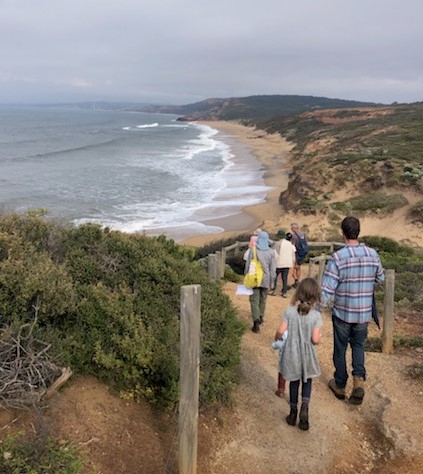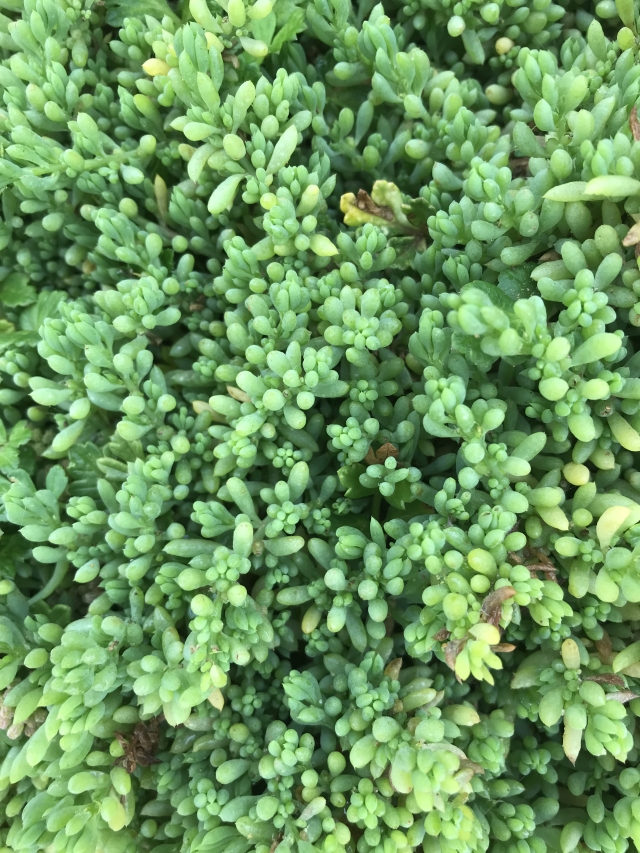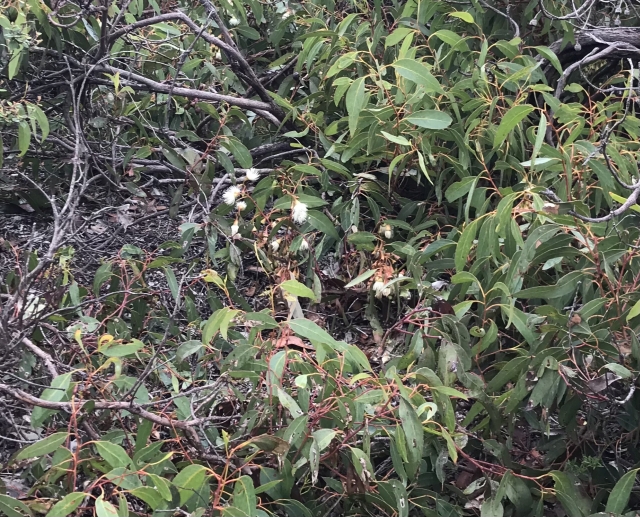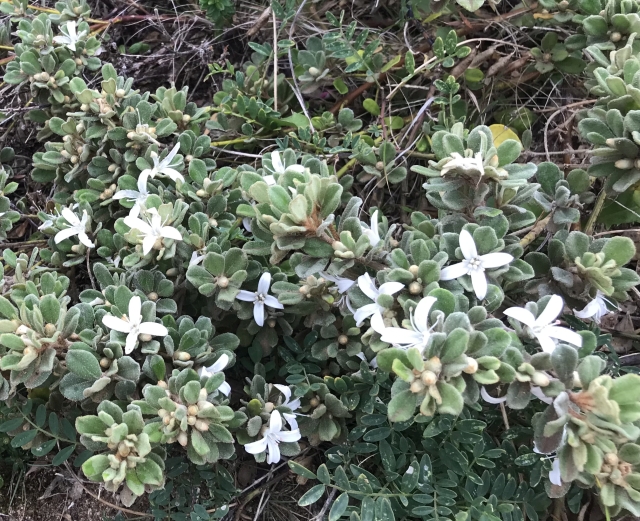Survival in a coastal environment was the theme for this month’s ramble, and what better beach to observe examples of specific plant adaptations than Red Rocks Beach, west of Pt Addis.
As this was a public holiday, several families were able to join the ramble, the interest and interaction from the children made the morning even more rewarding.
 Looking west towards Anglesea
Looking west towards Anglesea
The Rounded Noon-flower, Disphyma crassifolium subsp. clavellatum, can be easily admired around the edges of the Pt Addis car park where it is growing as well as alongside the beach access track. Its ground hugging growth habit and succulent leaves, adapted for water storage, ensure It is well suited to these exposed sites.
 Rounded Noon-flower, Disphyma crassifolium subsp. clavellatum
Rounded Noon-flower, Disphyma crassifolium subsp. clavellatum
Although the interesting leaves of the aptly named Coast Twinleaf, Roepera billardierei, are not as succulent as those of the Rounded Noon-flower, their glossy green surface reflects light which reduces the leaf temperature, which in turn reduces water loss.
It is important to be aware that Coast Twinleaf is classified as endangered under the Flora and Fauna Guarantee Act. This indicates that the extent and number of the known population is in decline.
 Coast Twinleaf, Roepera billardierei
Coast Twinleaf, Roepera billardierei
Bonefruit, Threlkeldia diffusa, the common name referring to the very hard seed contained within the fruit, is another highly adapted coastal plant growing in this area. Its survival is aided by the masses of succulent small leaves, each a water storage area.
 Bonefruit, Threlkeldia diffusa
Bonefruit, Threlkeldia diffusa
The beach access track provides many fascinating examples of plant growth which has been drastically modified for survival by the prevailing south westerly winds. The majestic Ironbark, Eucalyptus tricarpa subsp. tricarpa, often admired in the Ironbark Basin and Distillery Creek Picnic Ground may not be so readily recognisable at Pt Addis where they cling for existence. The same could also be said for Moonah, Melaleuca lanceolata, often admired growing alongside the Anglesea River.
 Ironbark, Eucalyptus tricarpa subsp. tricarpa
Ironbark, Eucalyptus tricarpa subsp. tricarpa
 Moonah, Melaleuca lanceolata
Moonah, Melaleuca lanceolata
During autumn and winter, the flowers of White Correa, Correa alba var. alba, are obvious, but what may not be as obvious is the hairy nature of the grey leaves. It is well worth crouching down and examining both leaf surfaces with a hand lens. The purpose of the hairs is to trap water vapour, slowing down the rate at which water is lost from the leaf surface. This plant adaptation is common to many plants growing in extremely windy areas, for example Hairy Spinifex, Spinifex sericeus, an indigenous dune stabiliser found along our coastline.
 White Correa, Correa alba var. alba
White Correa, Correa alba var. alba
 Hairy Spinifex, Spinifex sericeus
Hairy Spinifex, Spinifex sericeus
Masses of fine hairs on the stems and leaves provide the silvery appearance of the popular Cushion Bush, Leucophyta brownii. Combined with the reduced leaf surface area of its scale-like leaves, the plant is well adapted to the coastal environment.
 Cushion Bush, Leucophyta brownii
Cushion Bush, Leucophyta brownii
Gail Slykhuis.
Images: Gail Slykhuis, Ellinor Campbell, Mandy Mitchell-Taverner